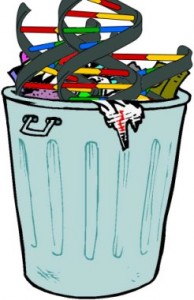A new hydrogel made from polyacrylamide and alginic acid polymers can be stretched up to 20 times its original length before breaking.
A hydrogel is a network of polymers that soaks up lots of water to form a jelly-like material. But most shatter easily and don’t stretch far without breaking. Some of the toughest hydrogels are used to make soft contact lenses, and researchers want to make them more robust, for use in replacement cartilage or as scaffolds for growing artificial organs.
Suo’s hydrogel is made from a mixture of two polymers — alginate and polyacrylamide. Each polymer forms networks using different types of chemical bond: alginate molecules are linked together by ionic bonds, and polyacrylamide molecules by stronger covalent bonds. When the gel is stretched, hit or torn, the ionic bonds can break and reform throughout the material, dissipating energy over a wide area and causing fewer of the covalent bonds to be irreversibly ruptured. The covalent bonds hold the material together, allowing it to spring back to its original shape.
Separately, the two polymers can each form normal hydrogels — but when they are mixed together, the resulting material is far stronger than its constituent parts. The energy needed to fracture the combination hydrogel is on a par with that for natural rubber at 9,000 joules per square metre, and the gel can be stretched to 20 times its original length without breaking. “You can’t even tear it apart with your hands,” says Suo.
More at Nature.com
